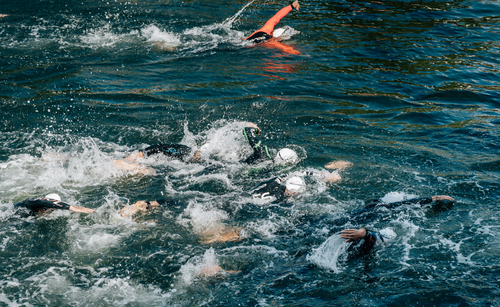How to Avoid the Seven Most Common Training Mistakes

Making mistakes with your training can severely hinder your preparation and progress, so we enlisted the help of USA Track & Field and USAT certified coach Marcelo Holcberg to shed light on these mistakes and explain how to prevent them.

1. Under & Over Training. Your training is your training: Try not to miss a session or do more than prescribed. Discipline in training is essential to your performance.
2. Understanding your Training. Spend 15 minutes every week looking at your upcoming training schedule. Think about the routines and why the coach puts them in that order. It will help you to understand the sport better.
3. “Key” workouts. These are the most important workouts of your training. If you feel like missing one day, miss the easy days but not the “key” workouts days. For this, you must understand which are key workouts and why.
4. Not Staying in your Zones. Once you are tested, you should know your zones.
5. Going too hard on easy days. This is related to mistakes we have talked about before: understand your training and be respectful of the routines your coach has designed for you to avoid injuries and low performance.
6. Racing long distances before you are ready. There is a logical sequence to follow and that is starting with short distances and slowly gradually go increasing. I suggest triathletes to do an IRONMAN 70.3 distance at least on their third year of consecutive training and the Full IRONMAN distance after experiencing a few 70.3 distances. The same applies for runners planning to do Marathons. I suggest starting with 5 and 10K, then a few 13.1s before a 26.2 distance. What I mean by “consecutive” training is NO interruptions, unless injuries occur.
7. Don’t underrate race distances as a 5 K or a Sprint Distance Triathlon. The whole running and triathlon industry is pushing you to run a Marathon and to do an IRONMAN. In my opinion, you don’t need to be an IRONMAN to be a triathlete and don’t need to do a Marathon to be a runner.
Get to grips with these common mistakes, understand how to avoid them, and you will see huge improvements in your performance.
Written by
Marcelo Holcberg

Making mistakes with your training can severely hinder your preparation and progress, so we enlisted the help of USA Track & Field and USAT certified coach Marcelo Holcberg to shed light on these mistakes and explain how to prevent them.

1. Under & Over Training. Your training is your training: Try not to miss a session or do more than prescribed. Discipline in training is essential to your performance.
2. Understanding your Training. Spend 15 minutes every week looking at your upcoming training schedule. Think about the routines and why the coach puts them in that order. It will help you to understand the sport better.
3. “Key” workouts. These are the most important workouts of your training. If you feel like missing one day, miss the easy days but not the “key” workouts days. For this, you must understand which are key workouts and why.
4. Not Staying in your Zones. Once you are tested, you should know your zones.
5. Going too hard on easy days. This is related to mistakes we have talked about before: understand your training and be respectful of the routines your coach has designed for you to avoid injuries and low performance.
6. Racing long distances before you are ready. There is a logical sequence to follow and that is starting with short distances and slowly gradually go increasing. I suggest triathletes to do an IRONMAN 70.3 distance at least on their third year of consecutive training and the Full IRONMAN distance after experiencing a few 70.3 distances. The same applies for runners planning to do Marathons. I suggest starting with 5 and 10K, then a few 13.1s before a 26.2 distance. What I mean by “consecutive” training is NO interruptions, unless injuries occur.
7. Don’t underrate race distances as a 5 K or a Sprint Distance Triathlon. The whole running and triathlon industry is pushing you to run a Marathon and to do an IRONMAN. In my opinion, you don’t need to be an IRONMAN to be a triathlete and don’t need to do a Marathon to be a runner.
Get to grips with these common mistakes, understand how to avoid them, and you will see huge improvements in your performance.
Written by
Marcelo Holcberg
SEE WHAT CUSTOM APPAREL LOOKS LIKE

GEAR UP
MORE FROM THE BLOG

How to Plan Your 2019 Season to Put Your Hard Training to Good Use
Team Innerforce's 2019 coach, Rick Lapinski, explains how to effectively plan your race schedule in order to get the most...

Breakfasts to fuel your bike session
To bike well, one has to eat well. Early morning sessions are always tough, but focussing on a good...

Innerforce Signs Kayla Kobelin: "I'm excited to to push myself even further"
It is with great pride that we, at Innerforce, welcome Kayla Kobelin to the Innerforce family as our first sponsored...

Triathlete Nutrition: What to Eat to Maximize Performance
Nutrition is crucial in any sport but for a multi-faceted discipline like triathlon, which tests your swimming, cycling and running...



